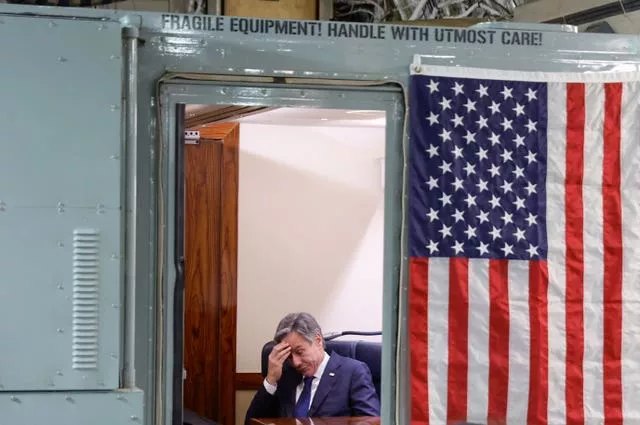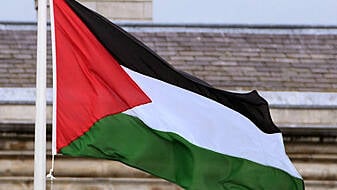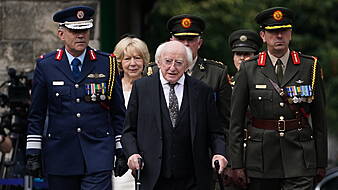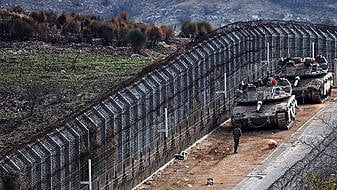Israeli military strikes have killed multiple civilians at a UN shelter and hospital in the main combat zone in the Gaza Strip as the assault intensified on the besieged enclave’s Hamas rulers.
The military strikes on Saturday came amid growing international uproar over the soaring death toll and deepening humanitarian crisis.
Israel’s military said it has encircled Gaza City, the target of its offensive to crush Hamas, but on Saturday offered a three-hour window for residents trapped by the fighting to flee south.
The new attacks came as US secretary of state Antony Blinken was in the region trying to find ways to ease the plight of the civilians caught up in the fighting.
He met Arab foreign ministers on Saturday in Jordan, the day after talks with Israeli prime minister Binyamin Netanyahu, who insisted there can be no temporary ceasefire until all hostages held by Hamas are released.
The Israeli military has repeatedly demanded that northern Gaza’s 1.1 million residents flee south as it escalates bombardment of the north and tightens the noose around Gaza City.
However, some of those travelling south were killed during their journey in recent days, and Israel has continued bombing in the south, saying it is striking Hamas targets.
With wide swathes of residential neighbourhoods levelled in air strikes, most of northern Gaza’s remaining residents, estimated at around 300,000, have sought shelter in UN-run schools and in hospitals where they hope they will be safe. But deadly Israeli strikes have also repeatedly hit and damaged those shelters.
On Saturday, two strikes hit a UN school-turned-shelter just north of Gaza City, killing several people in tents in the schoolyard and women who were baking bread inside the building, according to the UN agency for Palestinian refugees.

Initial reports indicated that 20 people were killed, but the agency has not yet been able to verify the figure, spokesperson Juliette Touma said.
The Health Ministry in Hamas-run Gaza reported that 12 people were killed at the school and another 50 people wounded. Some 18,000 Palestinians had been sheltering there.
Also on Saturday, two people were killed in a strike by the gate of Nasser Hospital in Gaza City, according to Medhat Abbas, spokesman for the Health Ministry.
About 1.5 million people in Gaza, or 70% of the population, have fled their homes, according to the UN.
With food, water and the fuel needed for generators that power hospitals and other facilities running out, UN secretary-general Antonio Guterres urged an immediate ceasefire to allow aid in.

“The humanitarian situation in Gaza is horrific,” Mr Guterres said late Friday in an unusually blunt statement. “An entire population is traumatised, nowhere is safe.”
Mr Guterres said he had not forgotten the slaughter of civilians at the hands of Hamas militants when they launched their attack on Israel almost a month ago, but said civilians and civilian infrastructure must be protected.
He also said civilians must not be used as human shields, and called upon Hamas to release all of the roughly 240 hostages it has.
The family home of Hamas’s exiled leader, Ismail Haniyeh, in the Shati refugee camp on the northern edge of Gaza City, was hit on Saturday morning by an air strike, according to the Hamas-run media office in Gaza. It had no immediate details on damage or casualties and there was no immediate comment.
Overnight strikes also hit the western outskirts of the city and near Al-Quds Hospital in Gaza City. Another strike hit a building close to the entrance of the hospital’s emergency ward on Saturday afternoon, injuring at least 21, the Palestinian Red Crescent said.

Adly Abu Taha, a Gaza City resident who has sheltered in the hospital grounds for the past three weeks, said strikes have repeatedly hit close to the hospital in recent days.
“The bombardment gets closer day by day,” he said over the phone. “We don’t know where to go.”
Despite Israel’s call for civilians to flee south, strikes have continued there as well.
Raed Mattar, who was sheltering in a school in the southern town of Khan Younis after fleeing the north early in the war, said on Saturday that he regularly heard explosions, apparently from air strikes.
“People never sleep,” he said. “The sound of explosions never stops.”
In the centre of Khan Younis, an air strike early Saturday destroyed the home of a family, with first responders pulling three bodies and six injured people from the rubble.
Among those killed was a child, according to an Associated Press cameraman at the scene.
The Israeli military said ground forces were also now operating in the south, with an armoured and engineering corps working to remove booby traps from buildings.
During the operation the military said fighters were seen exiting a tunnel and they were killed by Israel troops.
The military said there were also numerous attacks staged from tunnels on Israeli forces in the northern Gaza strip.

Elsewhere, skirmishes along Israel’s northern border continued on Saturday morning as the Israeli military said it had struck militant cells in Lebanon trying to fire at Israel, as well as a Hizbullah observation post.
Throughout the war, Israel and Hizbullah, an ally of Hamas, have traded fire almost daily along the Lebanese border, raising fears of a new front opening there.
On Friday in Tel Aviv, on his third trip to Israel since the war began, Mr Blinken pushed US president Joe Biden’s calls for a brief halt in the fighting to address the worsening humanitarian crisis. But Mr Netanyahu said there could be no humanitarian pause until Hamas releases all the hostages it holds.
On Saturday he held meetings in Amman with diplomats from Jordan, Egypt, Saudi Arabia, Qatar, the United Arab Emirates and the Palestinian Authority, who remain angry and deeply suspicious of Israel.
In addition to aid distribution, allowing foreigners out and the release of hostages, Mr Blinken is looking to get Jordan and other Arab states to begin to think about the future of Gaza if and when Israel succeeds in taking control from Hamas.

Arab leaders have so far resisted American suggestions that they play a larger role in the crisis, expressing outrage at the civilian toll of the Israeli military operations but believing Gaza to be a problem largely of Israel’s own making.
More than 9,400 Palestinians have been killed in Gaza so far, including more than 3,900 Palestinian children, the Gaza Health Ministry said, without providing a breakdown between civilians and fighters.
More than 1,400 people have died on the Israeli side, mainly civilians killed during Hamas’s initial attack.
Rocket fire by Gaza militants into Israel persists, disrupting life for millions of people and forcing an estimated 250,000 to evacuate. Most rockets are intercepted.
Twenty-four Israeli soldiers have been killed in Gaza since the start of the ground operation.

The overall toll is likely to rise dramatically as the assault on densely built-up Gaza City continues.
More than 386 Palestinian dual nationals and wounded exited Gaza into Egypt on Friday, according to Wael Abou Omar, the Hamas spokesperson for the Rafah border crossing. That brings the total who have left since Wednesday to 1,115.







